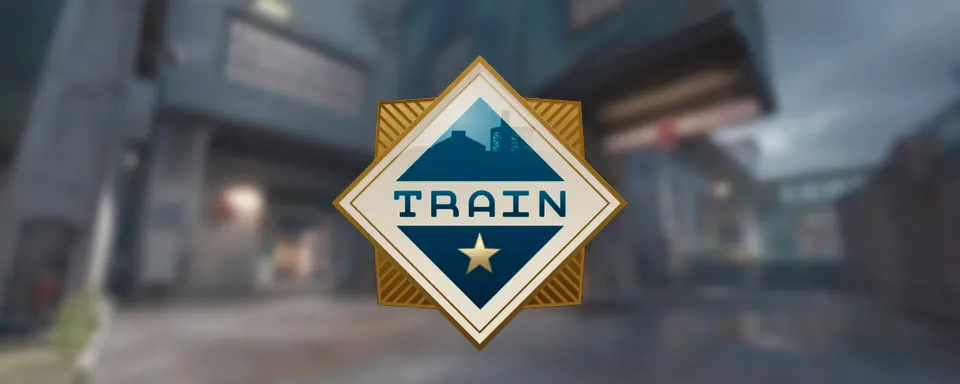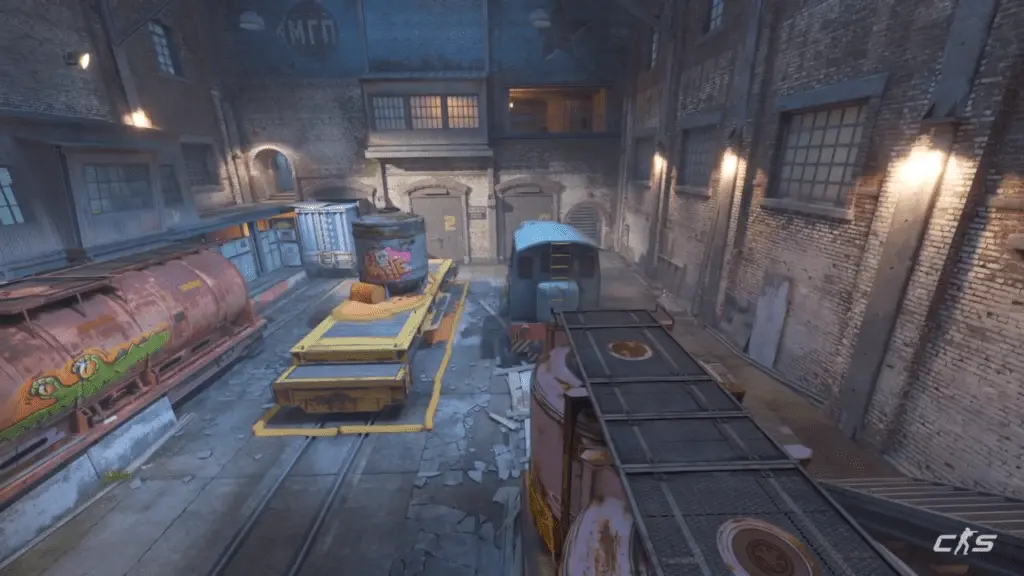
The Train map, one of the most iconic in Counter-Strike, is rumored to return to the active map pool in CS2. This potential comeback could shift the meta, making it crucial for players to understand the map’s layout and key callouts. In this guide, we’ll cover all the essential Train callouts in CS2, helping you master the map and enhance team communication.
What Are Callouts and Why Are They Important?
Callouts are the names of specific locations on a map that players use to communicate quickly and effectively. Knowing Train CS2 callouts allows teams to coordinate strategies, react to enemy movements, and improve overall gameplay. For example, calling out an opponent’s position in real time can be the difference between victory and defeat.
Key Callouts for Train A Site
The A site on Train is a vast open area filled with train cars and tight angles. Here are the most important Train map callouts for this site:
- Red Train: The central train on A site, commonly used for cover and surprise attacks.
- Yellow Train: Positioned closer to Connector, ideal for holding angles on A.
- E-box: A small box near Red Train, perfect for quick peeks or holding corners.
- Heaven: A high vantage point overlooking A site, great for defending.
- Hell: The lower area between Heaven and Yellow Train.
- 1st Lane, 2nd Lane, 3rd Lane: Narrow paths between the trains, providing cover and tactical positions.
- Old Bomb: A critical spot near 1st Lane, often used to hold control of the site.
These Train A site callouts are essential for both attackers and defenders to plan their moves efficiently.


Key Callouts for Train B Site
The B site is more enclosed and favors close-range engagements. Here are the primary Train B site callouts:
- Default Bomb Train: The main train where the bomb is usually planted.
- Oil Train: A nearby train that provides excellent cover during bomb plants or defuses.
- Cat: The pathway leading to the B site, commonly used for surprise entries.
- Summit: The space between Oil Train and Default, often contested during post-plant situations.
- Sidewalk: A long corridor that leads to B site, offering a direct route for attacks.
- Lower and Upper: Two entry points to B site with different height advantages.
Mastering these Train map callouts can give you a tactical edge in holding or retaking the B site.

Other Essential Train Callouts
Beyond the bomb sites, Train has several other critical areas:
- T Main: The primary entry point for terrorists heading to A site.
- Popdog: A ladder-based area connecting the upper and lower parts of the map.
- Connector: A pivotal location that links A and B sites, crucial for rotations.
- Ivy: A long corridor leading to A site from T spawn.
- CT Stairs: A defensive position for counter-terrorists to control rotations.
These additional Train map callouts are crucial for team coordination and ensuring effective gameplay.

Why Learning Callouts Matters
Understanding and using CS2 Train callouts significantly improves your game. Proper communication allows teams to adapt quickly, strategize effectively, and gain an edge over opponents. Knowing all the key locations is especially vital for executing retakes, defending sites, or planning surprise attacks.

The Return of Train to the CS2 Map Pool
Recent reports suggest that Train return to the active map pool. This would mark a significant moment for the professional scene, as Train has always been a fan favorite. Its complex design and tactical possibilities make it one of the most challenging yet rewarding maps. Now is the perfect time to brush up on Train CS2 callouts to stay ahead of the competition.
Train is a map with a rich history and countless tactical opportunities. Knowing the Train callouts in CS2 gives you a clear advantage and helps your team excel. Practice these callouts and prepare for Train’s triumphant return to competitive play!
Comments
Upcoming Top Matches
Latest top articles







No comments yet! Be the first one to react